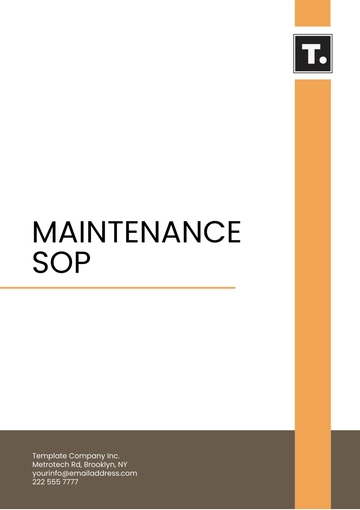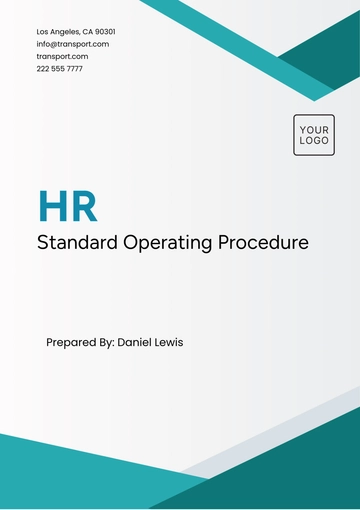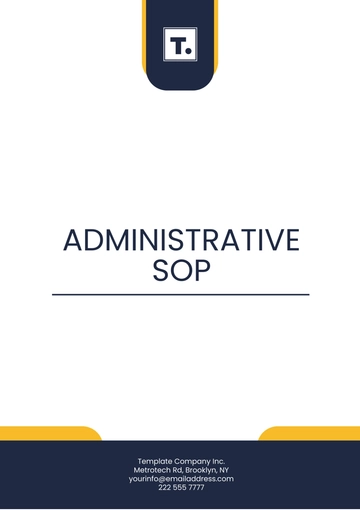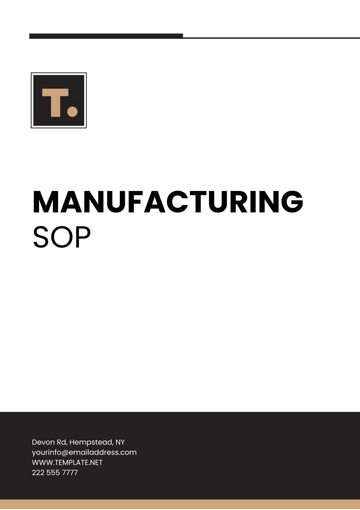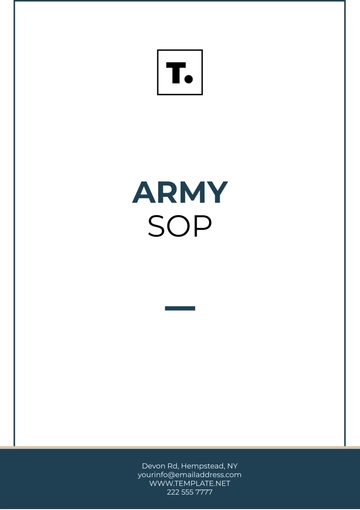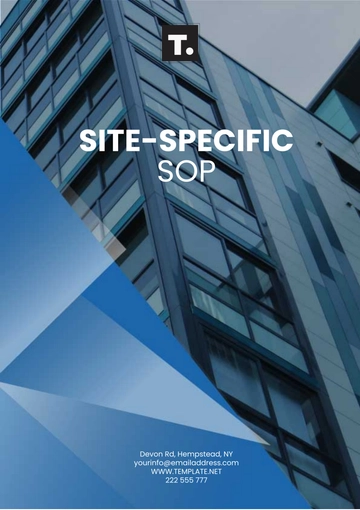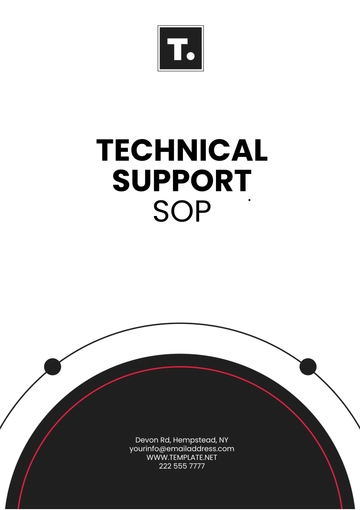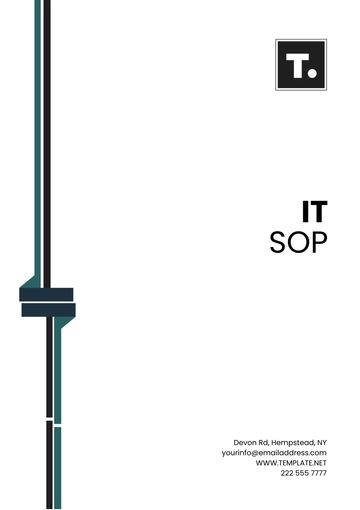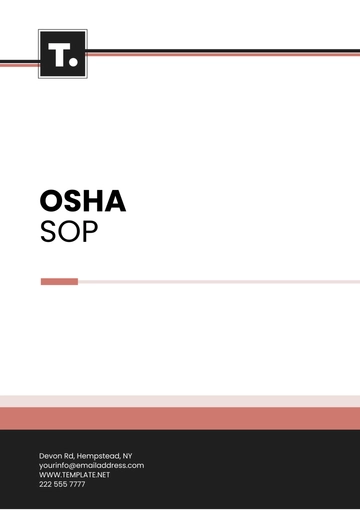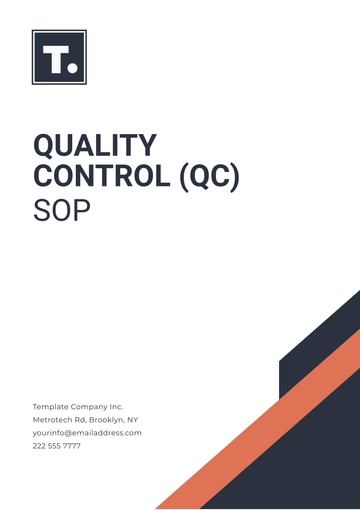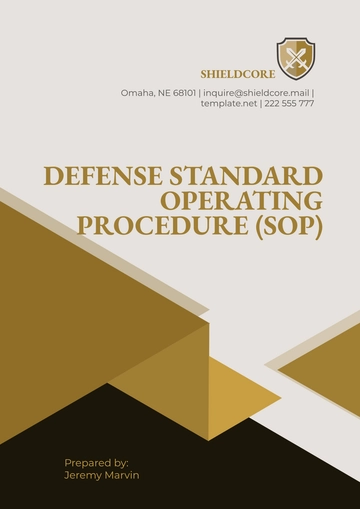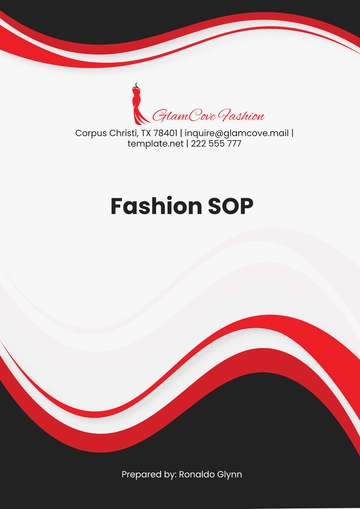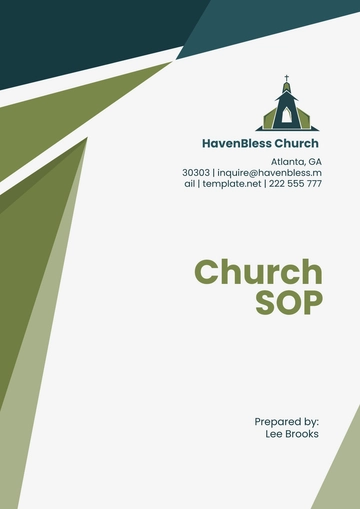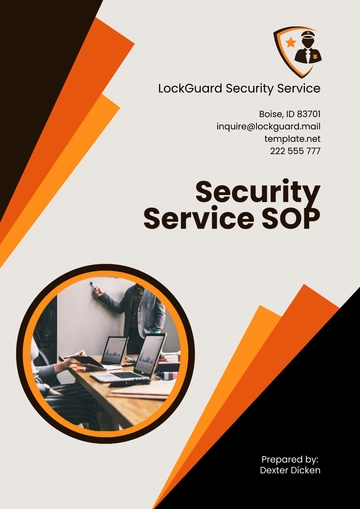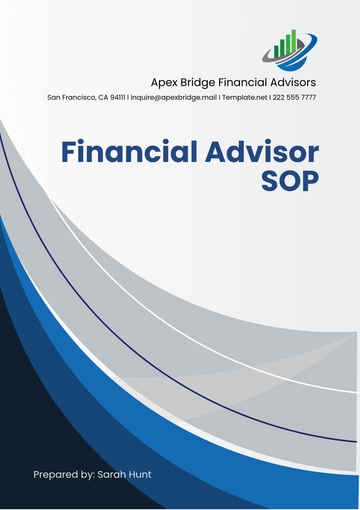Free Car Rental Business SOP

I. Introduction
A. Purpose
The purpose of this Standard Operating Procedure (SOP) is to outline the processes and guidelines for operating the car rental business, [Your Company Name]. This document offers comprehensive and detailed instructions designed to guarantee the consistent and efficient delivery of services. Additionally, it aims to ensure a high level of customer satisfaction by outlining best practices and procedures. Furthermore, the guidelines within this document adhere to and comply with established industry standards, thereby promoting adherence to quality and regulatory requirements.
B. Scope
This SOP applies to all employees and departments involved in the car rental operations of [Your Company Name]. The document encompasses a comprehensive range of procedures that span the entire rental process, starting from the initial inquiry made by a prospective customer and extending all the way to the return of the rental vehicle. Moreover, it incorporates detailed guidelines on maintaining the vehicle in proper working condition as well as clearly defined protocols to be followed in case of emergencies.
C. Definitions
Rental Agreement: A contract between [Your Company Name] and the customer outlining the terms and conditions of the vehicle rental.
Customer Service Representative (CSR): An employee responsible for assisting customers with their rental needs and inquiries.
Rental Fleet: The collection of vehicles available for rent at [Your Company Name].
Maintenance Log: A record of all maintenance and repairs performed on rental vehicles.
II. Customer Inquiry and Reservation
A. Inquiry Handling
Prompt Response: Respond to customer inquiries within 30 minutes during business hours. Use a polite and professional tone to address their questions.
Information Gathering: Collect necessary details such as rental dates, vehicle preferences, and any special requests. Confirm the customer's contact information.
Availability Check: Verify the availability of requested vehicles using the reservation system. Offer alternatives if the preferred vehicle is not available.
Quotation: Provide a detailed quotation including rental rates, additional fees, and any applicable discounts. Explain the terms and conditions clearly.
Follow-Up: Send a follow-up email or message confirming the reservation details and next steps.
B. Reservation Confirmation
Reservation System Entry: Enter all reservation details into the reservation system accurately. Ensure that all customer information is up-to-date.
Deposit Requirement: Inform the customer of the deposit requirement and payment methods. Secure the deposit to confirm the reservation.
Confirmation Email: Send a confirmation email with reservation details, terms, and conditions. Include instructions for vehicle pick-up.
Reminder Notification: Send a reminder notification to the customer 24 hours before the scheduled pick-up time. Include any necessary documentation they need to bring.
C. Customer Information
The following table provides an overview of the customer information required during the inquiry and reservation process:
No. | Information Type | Description |
|---|---|---|
1 | Contact Information | Customer's name, phone number, and email address |
2 | Rental Dates | Start and end dates of the rental period |
3 | Vehicle Preferences | Preferred vehicle type, model, and any specific features |
4 | Special Requests | Any additional services or special requirements from the customer |
Collecting contact information ensures that we can reach the customer for any updates or confirmations. Accurate contact information is vital for effective communication throughout the rental process. Rental dates allow us to check vehicle availability and plan our fleet usage efficiently. Knowing the specific rental period helps us manage our inventory and ensure we have the right vehicles available when needed.
Understanding vehicle preferences enables us to meet customer expectations and provide a satisfying rental experience. Customers often have specific needs or preferences, such as vehicle size, fuel type, or additional features. Special requests, such as child seats or GPS systems, help us tailor our services to individual customer needs, enhancing their overall experience with our rental service.
III. Vehicle Preparation and Maintenance
A. Pre-Rental Inspection
Thorough Inspection: Conduct a thorough inspection of the vehicle before rental. Check for any existing damage, tire pressure, fluid levels, and cleanliness.
Documentation: Document the condition of the vehicle using the pre-rental inspection checklist. Include photos of any existing damage.
Maintenance Log Update: Update the maintenance log with the inspection details. Record any maintenance performed prior to the rental.
Fuel Level: Ensure the fuel tank is full or at the agreed-upon level. Note the fuel level in the rental agreement.
Safety Features: Verify that all safety features, such as seat belts, airbags, and lights, are functioning properly.
B. Vehicle Cleaning
Interior Cleaning: Clean the interior of the vehicle thoroughly. Remove any trash, vacuum the seats and floors, and wipe down all surfaces.
Exterior Cleaning: Wash the exterior of the vehicle to remove dirt and debris. Check for any new damage that may have occurred since the last rental.
Sanitization: Sanitize high-touch areas such as door handles, steering wheel, and dashboard. Use appropriate cleaning agents to ensure safety.
Final Check: Perform a final check to ensure the vehicle is in pristine condition and ready for the customer. Address any last-minute issues promptly.
C. Maintenance Schedule
The following table outlines the maintenance schedule for the rental fleet:
No. | Maintenance Task | Frequency |
|---|---|---|
1 | Oil Change | Every 5,000 miles or as recommended |
2 | Tire Rotation | Every 7,500 miles |
3 | Brake Inspection | Every 10,000 miles |
4 | Fluid Level Check | Monthly |
5 | Comprehensive Inspection | Every 15,000 miles or annually |
Regular oil changes are crucial for maintaining the engine's performance and longevity. Changing the oil at the recommended intervals helps prevent engine wear and ensures optimal functioning. Tire rotations are necessary to promote even tire wear, extending the life of the tires and ensuring a smooth and safe ride for our customers.
Brake inspections are essential for safety, allowing us to identify and address any potential brake issues before they become serious problems. Checking fluid levels monthly ensures that all systems, such as coolant, transmission, and power steering, are properly maintained and functioning. Comprehensive inspections provide an in-depth look at the vehicle's overall condition, helping us catch any issues that may not be apparent during regular maintenance.
IV. Vehicle Pick-Up and Return
A. Pick-Up Process
Identification Verification: Verify the customer's identification and rental agreement details. Ensure that all required documents are presented.
Vehicle Walkthrough: Conduct a walkthrough of the vehicle with the customer. Point out any existing damage and note it in the rental agreement.
Operational Instructions: Provide instructions on vehicle operation, including key features and controls. Answer any questions the customer may have.
Payment Collection: Collect the remaining rental fee and any additional charges. Provide a receipt and confirm the payment details.
Documentation Completion: Ensure all necessary documentation is completed and signed by the customer. Give the customer a copy of the rental agreement.
B. Return Process
Vehicle Inspection: Inspect the returned vehicle for any new damage. Compare the condition with the pre-rental inspection checklist.
Mileage and Fuel Check: Record the mileage and check the fuel level. Note any discrepancies and discuss them with the customer.
Customer Feedback: Ask the customer for feedback on their rental experience. Address any concerns or issues they may have.
Final Payment: Settle any outstanding charges, such as additional mileage or fuel fees. Provide a final receipt to the customer.
Vehicle Cleaning: Clean and sanitize the vehicle, preparing it for the next rental. Update the maintenance log with any necessary notes.
V. Emergency Protocols
A. Accident Procedures
Immediate Response: Ensure the safety of all passengers and provide first aid if necessary. Contact emergency services if required.
Accident Report: Complete an accident report form detailing the incident. Include information such as date, time, location, and involved parties.
Police Report: Obtain a police report for the accident. Cooperate fully with law enforcement and provide any requested information.
Insurance Notification: Notify the insurance company of the accident. Provide all necessary documentation and cooperate with the claims process.
Vehicle Recovery: Arrange for the recovery and towing of the damaged vehicle. Ensure it is transported to an approved repair facility.
B. Breakdown Procedures
Customer Assistance: Provide immediate assistance to the customer. Offer instructions for safely handling the situation and arranging for alternate transportation.
Roadside Assistance: Contact roadside assistance services to address the breakdown. Ensure prompt response and resolution.
Replacement Vehicle: Arrange for a replacement vehicle for the customer if needed. Ensure the replacement meets the customer's requirements.
Maintenance Team Notification: Notify the maintenance team of the breakdown. Schedule a thorough inspection and necessary repairs for the vehicle.
Follow-Up: Follow up with the customer to ensure their satisfaction and address any remaining concerns. Document the incident for future reference.
VI. Vehicle Maintenance and Repairs
A. Routine Maintenance
Scheduled Maintenance: Adhere to the maintenance schedule outlined in the vehicle manual. Perform regular oil changes, tire rotations, and brake inspections.
Fluid Checks: Regularly check and top up all vehicle fluids, including engine oil, coolant, brake fluid, and windshield washer fluid.
Battery Inspection: Inspect the vehicle's battery regularly for signs of wear and corrosion. Ensure that the battery is properly charged and functioning.
Tire Care: Check tire pressure and tread depth regularly. Rotate tires as per the maintenance schedule and replace them when necessary.
Brake System: Inspect the brake system regularly. Replace brake pads and perform necessary repairs to ensure optimal performance.
B. Repairs
Damage Assessment: Conduct a thorough assessment of any reported or observed damage. Document the damage and determine the necessary repairs.
Repair Authorization: Obtain authorization for major repairs from the management. Ensure that all repairs are documented and approved.
Repair Execution: Perform repairs promptly and accurately. Use genuine parts and follow manufacturer guidelines to ensure quality.
Quality Check: Conduct a quality check after repairs are completed. Ensure that the vehicle is safe and ready for rental.
Maintenance Log Update: Update the maintenance log with all repair details. Keep a record of parts used, labor involved, and repair costs.
VII. Customer Service and Support
A. Customer Inquiries
Prompt Response: Respond to customer inquiries within 24 hours. Use a polite and professional tone to address their questions and concerns.
Information Provision: Provide accurate and comprehensive information about rental terms, vehicle availability, and services offered.
Complaint Handling: Address customer complaints promptly and effectively. Listen to their concerns, offer solutions, and follow up to ensure satisfaction.
Feedback Collection: Actively seek customer feedback on their rental experience. Use feedback to improve services and address any issues.
B. Customer Support Channels
Phone Support: Provide a dedicated customer support phone line. Ensure that calls are answered promptly and professionally.
Email Support: Offer an email support option for customers. Respond to emails within 24 hours and provide detailed responses.
Online Chat: Implement an online chat feature on the company website. Ensure that chat inquiries are handled promptly and efficiently.
In-Person Support: Provide in-person support at rental locations. Ensure that staff are well-trained to handle customer inquiries and issues.
VIII. Employee Training and Development
A. Training Programs
Orientation: Provide new employees with an orientation program that covers company policies, procedures, and expectations.
Customer Service Training: Train employees on customer service skills, including effective communication, problem-solving, and handling difficult situations.
Technical Training: Provide technical training on vehicle operations, maintenance, and safety protocols. Ensure employees are knowledgeable about the vehicles they will be handling.
Safety Training: Conduct regular safety training sessions. Cover topics such as emergency procedures, accident prevention, and workplace safety.
Ongoing Development: Offer ongoing development opportunities. Encourage employees to attend workshops, seminars, and courses to enhance their skills and knowledge.
B. Performance Evaluation
Regular Reviews: Conduct regular performance reviews. Provide constructive feedback and set goals for improvement.
Recognition and Rewards: Implement a recognition and rewards program. Acknowledge and reward employees for outstanding performance and dedication.
Career Advancement: Offer career advancement opportunities. Provide a clear path for promotion and professional growth within the company.
Feedback Mechanism: Establish a feedback mechanism for employees. Encourage them to share their thoughts and suggestions for improving the workplace.
IX. Review and Update
A. Annual Review
Policy Review: The management will conduct an annual review of the SOP. Ensure that it is up-to-date and reflect current best practices and regulations.
Employee Feedback: Collect feedback from employees on the effectiveness of the current SOP. Identify areas for improvement based on their input.
Customer Feedback: Analyze customer feedback to identify any issues or areas for improvement in our procedures and policies.
Regulatory Compliance: Ensure that the SOP comply with current regulations and industry standards. Update procedures as necessary to maintain compliance.
B. Update Process
Draft Revisions: We will draft revisions to the SOP based on the annual review and feedback collected. Ensure that proposed changes address identified issues and improvements.
Management Approval: Submit proposed revisions to management for approval. Ensure that all changes are thoroughly reviewed and authorized before implementation.
Employee Training: Train employees on the updated SOP. Ensure that they understand and can implement new procedures effectively.
Documentation: Update all relevant documentation to reflect the revised SOP. Ensure that all employees have access to the latest versions of all procedures.
Ensuring that our SOP are regularly reviewed and updated helps maintain the quality and effectiveness of our operations, supporting the long-term success of [Your Company Name].
- 100% Customizable, free editor
- Access 1 Million+ Templates, photo’s & graphics
- Download or share as a template
- Click and replace photos, graphics, text, backgrounds
- Resize, crop, AI write & more
- Access advanced editor
Standardize your operations with the Car Rental Business SOP Template! This template from Template.net offers a customizable format for creating a standard operating procedure. Its editable design makes it easy to adapt to your needs. The AI Editor Tool aids in drafting clear and comprehensive SOPs, ensuring consistency and efficiency!




